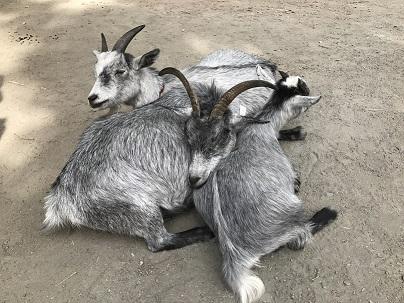Introduction
Visitor effect

In the world there are many kinds of animals in captive settings. Zoos and wildlife parks are one category that can keep animals, both wild and domesticated. These zoos and parks does as well have visitors by or inside the enclosures on a seasonal or year-round basis. Theses visitors can cause a so called “visitor effect” on the animals. The visitor effect can be defined as: Behavioural changes in animals due to presence of human audience. This visitor effect can be observed as negative, positive or of no significance on the animals.
Visitors affect several species of animals; primates as well as non-primates. Most of the studies find a negative or stressful visitor effect on animals. Both Western lowland gorillas (Gorilla gorilla gorilla) and cotton-topped tamarins (Saguinus oedipus) have been found to be more aggressive towards each other with higher visitor densities. Indian gaur (Bos gaurus gaurus) has also been observed to perform more aggressive behaviours but they were also moving around more when there were visitors present. Quite the opposite to this, sika deer (Cervus nippon) performmore resting behaviours and observing surroundings with higher visitor densities.
Zoos attract lots of visitors each year, which allow parks a great opportunity to educate the public in different ways such as having information signs, presentations with the animals and interactions. It Is often claimed that zoos, by evoking the visitors’ emotions enhance learning. One common way of doing so is by allowing visitors a hand-on access to animals, within a walk-through or petting exhibit. However, welfare for animals held under conditions as those of petting exhibits and walk-throughs needs to be ensured. There are studies which report that changes in behaviour of animals held in petting exhibits may be caused by stress as a response to visitors.
Even though domesticated animals live in close proximity to humans they can still be affected by visitors. Goat (Capra hircus) and sheep (Ovis aries) are species that are often kept in petting exhibits. Fear in goats can be increased by the visitors shouting, slapping and handling them roughly. Negative handling may reduce growth rate and increase basal free cortisol. Not unexpectedly, gentle petting and talking calmly made the goats less fearful.
Pygmy goats and Romanov sheep have shown when they had access to suitable retreat areas in the petting exhibit, they showed less aggressive, and other unwanted behaviours towards visitors. Romanov sheep overall have shown more undesirable behaviours that the African pigmy goats. However, the level of fearfulness differs in different breeds of goats and sheep. Therefor one could not say that sheep in general are more fearful than goats.
Responsible for this page:
Director of undergraduate studies Biology
Last updated:
05/17/18
